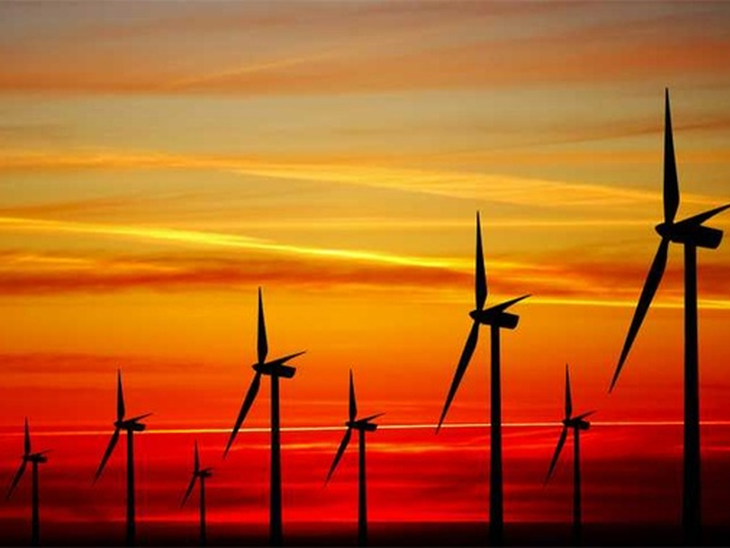
Press Release

According to the 2016 Statistical Communiqué on Economic and Social Development released today by China’s National Bureau of Statistics, China’s electricity sector transformation continued over 2016.
With coal consumption down 4.7% in 2016, the new data also confirms that China is now more than three years past its 2013 peak in coal.
“The transformation in China’s electricity sector continues. Energy demand has decoupled from economic activity, and when this is combined with record annual renewable energy installations, China continues to diversify away from coal faster than anyone expected,” said Tim Buckley, Director of Energy Finance Studies at the Institute for Energy Economics and Financial Analysis (IEEFA).
Key statistics
Renewable energy
“China has exceeded all expectations with its investment in renewable energy capacity, once again breaking its own world record for installation. The pace of growth and the decline in cost are extraordinary,” said Buckley.
China plans to invest US$360bn in new renewable energy capacity by 2020, driving new employment and technology development.
A world record 33.2 gigawatts (GW) of solar was installed in 2016, double China’s then record 15GW installed in 2015, which itself was double the highest ever German record annual installs of 7.6GW achieved back in 2012. On-grid utility solar grew 34% yoy to 39TWh in 2016.
In terms of wind, China installed ‘just’ 17.3GW in 2016, down from the record annual install of 29GW in 2015, again set by China. Wind generation grew 19% to 211TWh.
In offshore wind, analysis puts China’s Shanghai Electric Wind Power Equipment (Sewind) as the largest 2016 developer globally, commissioning 489MW of new capacity.
When combined with 18GW p.a. of new hydro and 5GW p.a. of nuclear capacity installed across China in the last four years, zero emissions electricity generation has delivered 70% of China’s total electricity demand growth post 2013.
IEEFA’s January 2017 report “China’s Global Renewable Energy Expansion” detailed the 60% yoy expansion to US$32bn in foreign renewables and grid investment by Chinese corporates over 2016: a trend we expect to continue.
Thermal power
“Coal is the biggest loser in the Chinese energy market. For the third year running, production and consumption dropped, while the utilization rate for coal-fired generators dropped to 47.5% - an all time low.”
“China’s short term energy policy support resulted in a chaotic seaborne market for coal in 2016, but as coal continues to lose market share, the declining trend for exporters such as Australia is unmistakable,” said Buckley.
“2017 is set to be another bleak year for China’s coal sector, with the government announcing further expansion curtailments already in January and February.”
China’s coal production declined an unexpected record 9.0% yoy to 3,410 million tonnes (Mt) in 2016. This brought the three year average decline to 4.9% p.a.; a decline of 564Mt in total. This dramatic reversal led the International Energy Agency (IEA) in November 2016 to conclude that China’s coal consumption most likely peaked back in 2013, whereas just two years earlier the IEA was forecasting China coal consumption to grow through to 2030.
China’s consumption of coal in 2016 declined 4.7% year on year (yoy), despite the 3.6% yoy growth in thermal power generation. With natural gas consumption +8% yoy, these two figures suggest a dramatic reduction in direct coal burning in self-use residential and industrial purposes.
Over 2013-2016 China has added a total of 200GW of new, effectively idle coal fired power generation, a 6.0% annual expansion to reach an estimated 982GW of installed coal fired powered capacity by December 2016.
The consequence has been a collapse to a record low 47.5% capacity utilisation rate for the coal-fired power sector in 2016, down from a near term peak of 79% capacity utilization as recently as 2011.
This consequence of this has been the construction of an unexpected US$200bn of stranded assets, with thermal efficiency and economic returns dramatically below those anticipated at the time planning was commenced.
China’s move from a 330 days per year of coal mining to 276 days in May 2016, followed by a retraction in October 2016, caused havoc in the seaborne coal market.
China’s net coal imports in 2016 were 255Mt, down 72Mt net on the 327Mt peak reached in 2013. This reflects an 11% decline in 2014 and then -31% in 2015, followed by a short term policy-induced recovery of +26% in 2016.
The move to restrict coal mining to 276 days was instigated to cut production and tighten pricing, to prevent a similar financial collapse of Chinese coal firms following Peabody Energy US’s move into Chapter 11 in April 2016. This saw spot thermal coal prices more than double from US$50/t in January 2016 to US$114/t by November 2016, before retracting to US$80/t today. The forward market shows price expectations moderating to US$71/t out to 2020-22.
Decoupling electricity from growth
China reported 5.6% annual electricity consumption growth in 2016, above the three-year average growth of 4.3% p.a. Electricity demand is tracking at 0.6 times the three year average of 7.0% p.a. GDP growth, a significant step down from the 1.0x GDP growth reported over the preceding decade.
However, the decoupling of total energy consumption from economic activity is clear. Total 2016 energy consumption grew just 1.4% versus 6.7% GDP growth.
Energy demand has decoupled from economic activity, at a time when economic activity has materially slowed on the 10% annual growth reported in the decade to 2013.

Contact us
2